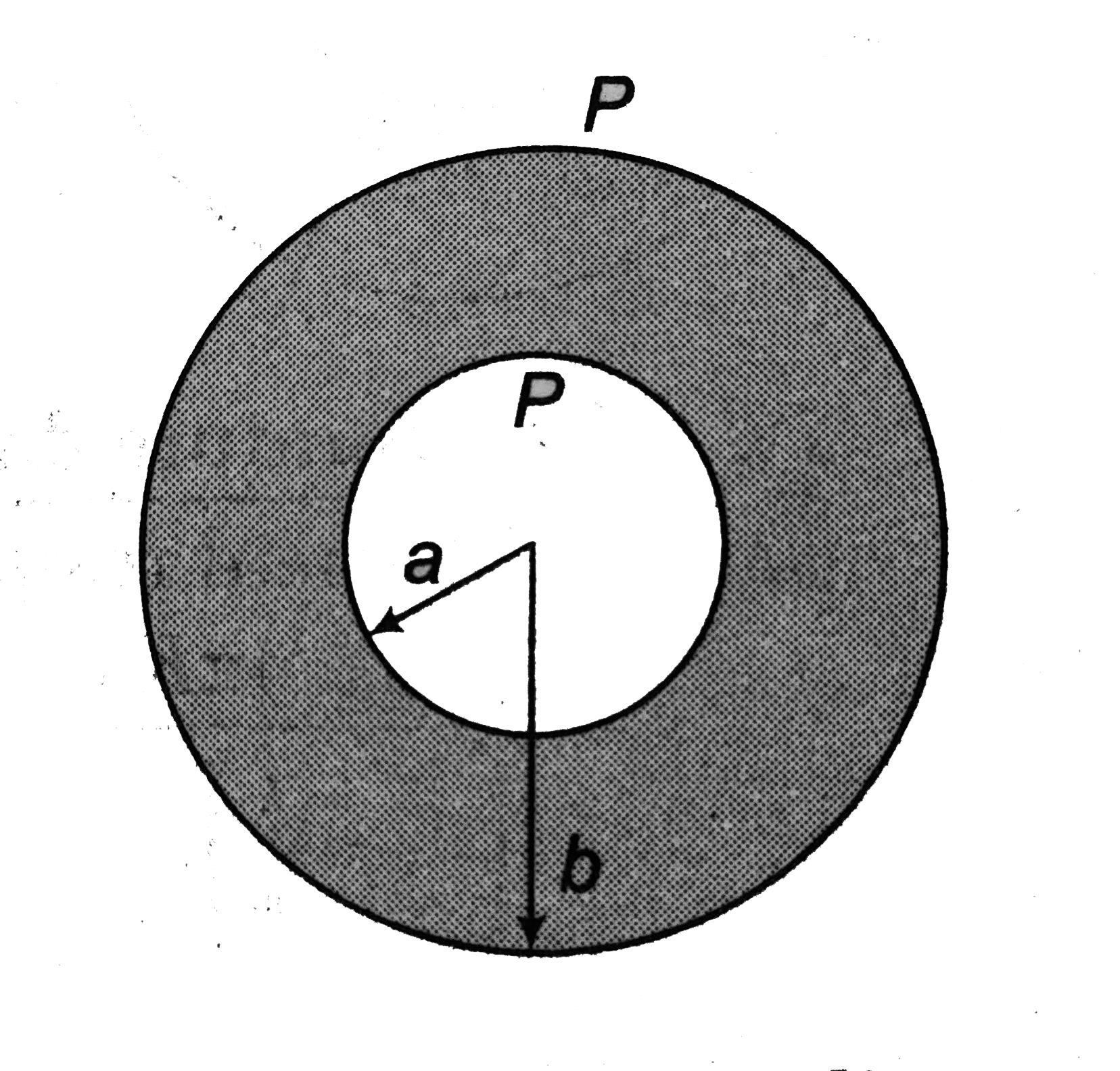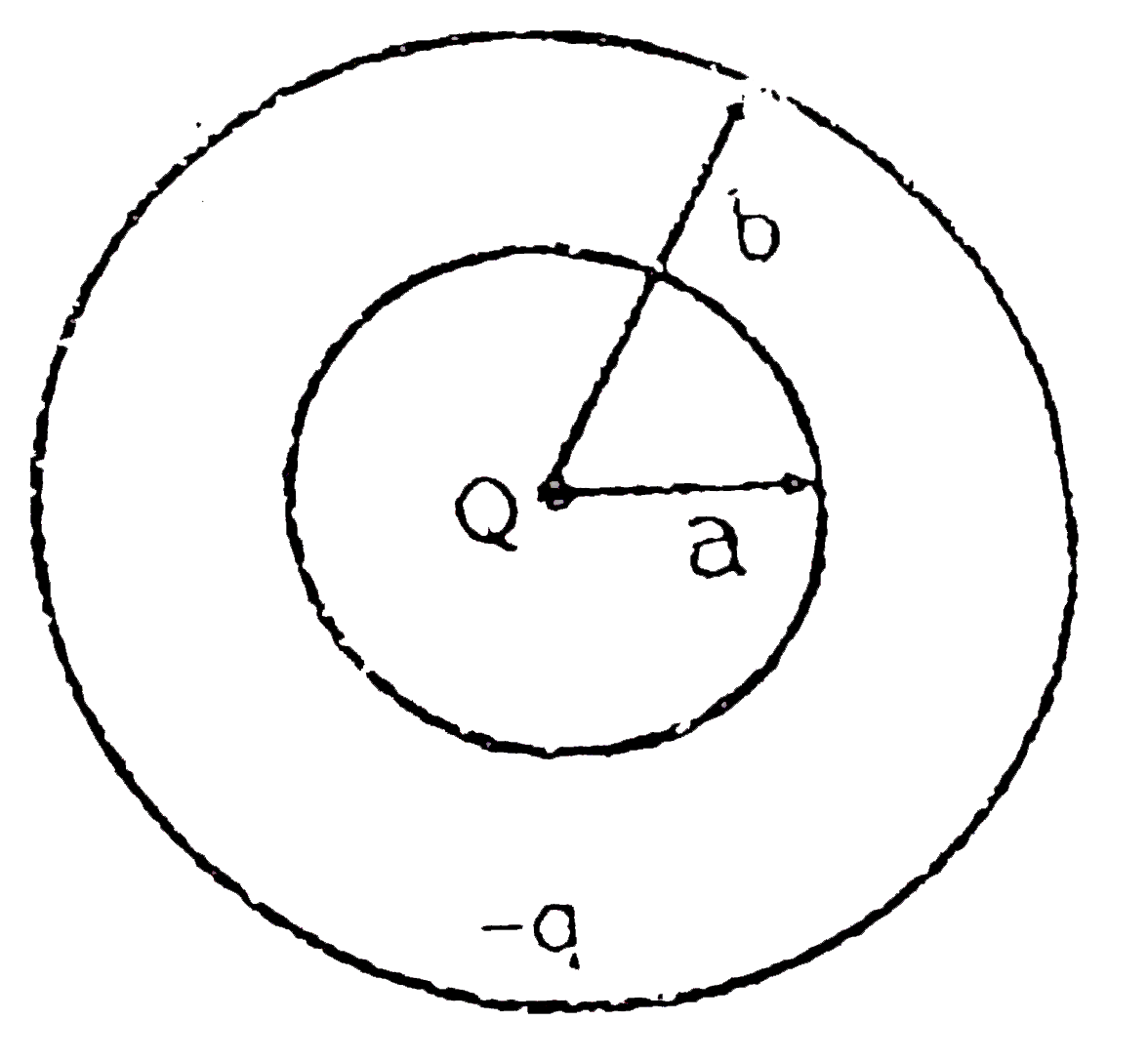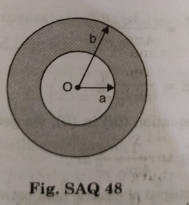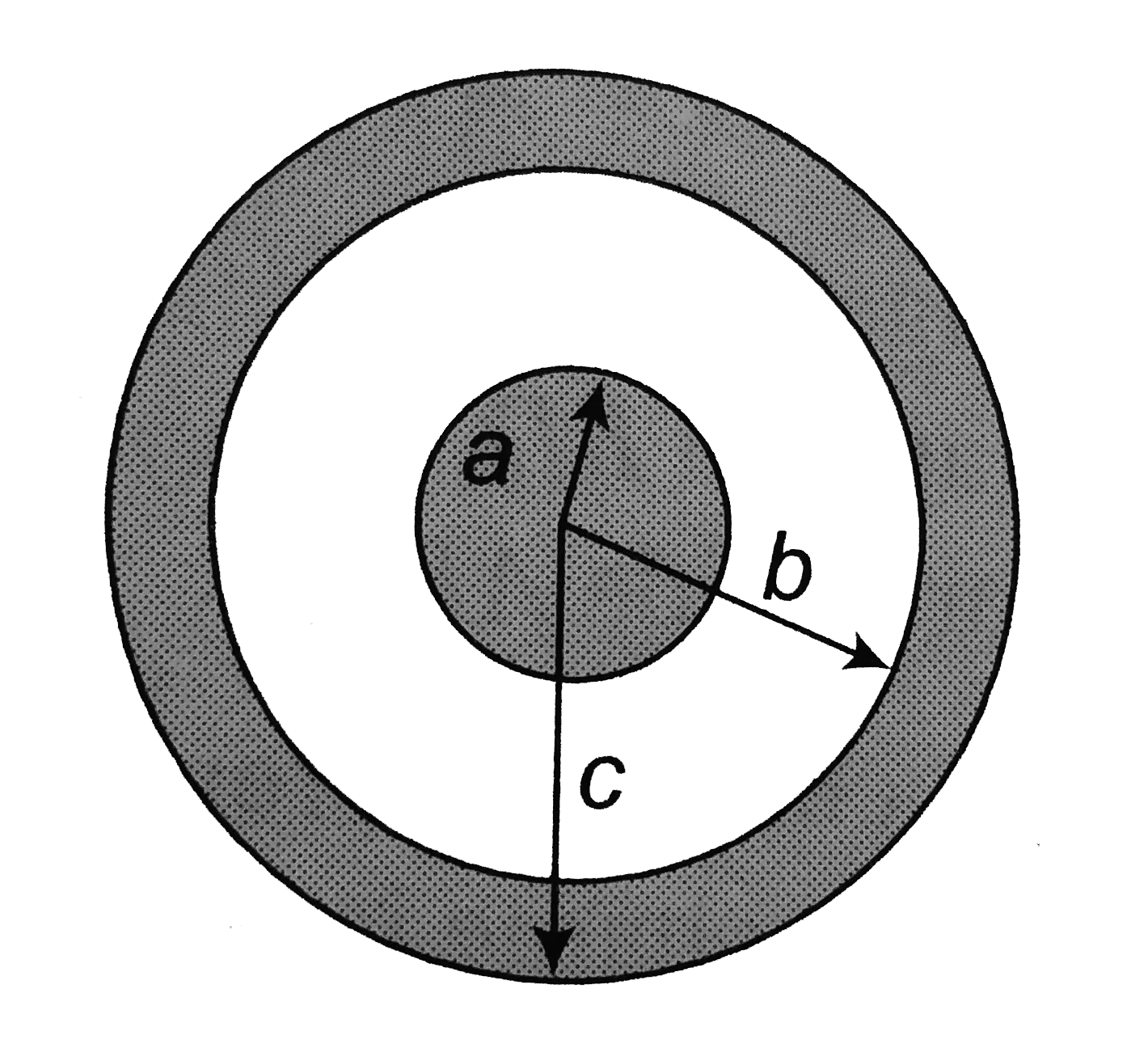A spherical ball A of surface area 20cm2 is kept at the centre of a hollow spherical shell B of area 80cm2. The surface of A and the inner surface of B emit as blackbodies. Assume that the thermal conductivity of the material of B is very poor and that of A is very high and that the air between A and B has been pumped out. The heat capacities of A and B are 42J/°C and 82J/°C respectively. Initially the temperature of A is 100°C and that of B is 20°C. Find the rate of change of temperature of A and that of B at this instant. Explain the effects of the assumptions listed in the problem.
KB is low thus it is a poor conducter and KA is high.Thus A will absorb no heat and conduct allSimilarly dθ/dtB = 0.043ºC/S
Related Solutions
A spherical ball A of surface area is kept at the centre of a hollow spherical shell B of area . The surface of A and the inner surface of B emit as blackbodies. Both A and B are at 300K. (a) How much is the radiation energy emitted per second by the ball A? (b) How much is the radiation energy emitted per second in the inner surface of B? (c) How much of the energy emitted by the inner surface of B falls back on this surface itself?
View SolutionA spherical ball A of surface area is kept at the centre of a hollow spherical shell B of area . The surface of A and the inner surface of B emit as blackbodies. Both A and B are at 300K. (a) How much is the radiation energy emitted per second by the ball A? (b) How much is the radiation energy emitted per second by the inner surface of B? (c) How much of the energy emitted by the inner surface of B falls back on this surface itself?
View SolutionA spherical ball A of surface area is kept at the centre of a hollow spherical shell B of area . The surface of A and the inner surface of B emit as blackbodies. Both A and B are at 300K. (a) How much is the radiation energy emitted per second by the ball A? (b) How much is the radiation energy emitted per second by the inner surface of B? (c) How much of the energy emitted by the inner surface of B falls back on this surface itself?
View SolutionSurface area of Spherical Shell
View SolutionA spherical body of radius 'b' has a concentric cavity of radius 'a' as shown. Thermal conductivity of the material is K. Find thermal resistance between inner surface P and outer surface Q.
View SolutionA spherical body of radius 'b' has a concentric cavity of radius 'a' as shown. Thermal conductivity of the material is K. Find thermal resistance between inner surface P and outer surface Q.

View SolutionA point charge is placed at the centre of a conducting spherical shell of inner radius a and outer radius b. Find the charge appearing on the inner and outer surface of the shell.
View SolutionA point charge is placed at the centre of a conducting spherical shell of inner radius a and outer radius b. Find the charge appearing on the inner and outer surface of the shell.
View SolutionThere are two concentric spherical shells A and B of surface area and . Surfaces ofboth the shells behave like black bodies. It is given thatthethermal conductivity ofmaterial of B is very low and that of A is very high. Initially the temperature of 4 is 400 K and that of B is 300 k. Find the rate of change of temperature of A and B. Given that the heat capacities of A and B are and respectively.
View Solutionएक उष्मीय बिन्दु स्त्रोत की क्षमता P है | इस स्त्रोत को एक ऐसे गोलीय कोश (Spherical shell) के केन्द्र पर रखा जाता है, जिसकी औसत त्रिज्या R है | कोश के पदार्थ का ऊष्मा चालकता गुणांक K है | यदि गोलीय कोश की भीतरी व बाहरी सतहों में तापान्तर T से अधिक न हो, तो गोलीय सतह की मोटाई से कम कितना चाहिए |
View SolutionA conducting spherical shell having inner radius a and outer radius b carries a net charge Q. If a point charge q is placed at the centre of this shell, then the surface charge density on the outer surface of the shell is given as:
View Solutionઅને જેટલી અંદરની અને બહારની ત્રિજ્યાઓ ધરાવતા ગોળાકાર કવચ માટે ઉષ્માપ્રવાહનું સૂત્ર = ........, જ્યાં અને કવચની અંદરની સપાટી અને બહારની સપાટીના તાપમાન છે (), કવચના દ્રવ્યની ઉષ્માવાહકતા k છે.
View SolutionShown in the figure a spherical shell with an inner radius 'a' and an outer radius 'b' is made of conducting metarial. A charge +Q is placed at the centre of the spherical shell and a total charge -q s placed on the shell. Charge -q is districuted on the surfaces as :

View SolutionShown in the figure a spherical shell with an inner radius 'a' and an outer radius 'b' is made of conducting metarial. A charge +Q is placed at the centre of the spherical shell and a total charge -q s placed on the shell. Charge -q is districuted on the surfaces as :

View SolutionShown in the figure a spherical shell with an inner radius 'a' and an outer radius 'b' is made of conducting metarial. A charge +Q is placed at the centre of the spherical shell and a total charge -q s placed on the shell. Charge -q is districuted on the surfaces as :

View SolutionA solid spherical conductor of radius R has a spherical cavity of radius at its centre. A charge is kept at the centre. The charge at the inner surface, outer surface are respectively.
View SolutionA point charge +Q is placed at the centre 0 of an uncharged hollow spherical conductor of inner radius 'a' and outer radius 'b'.Find the following.
The magnitude and sign of the charge induced on the inner and outer surface of the conducting shell.
View SolutionA point charge +Q is placed at the centre O of an uncharged hollow spherical conductor of inner radius 'a' and outer radius 'b'. Find the following:
The magnitude and sign of the charge induced on the inner and outer surface of the conducting shell.
View SolutionA spherical conducting shell of inner radius r_1 and outer radius r_2 has a charges 'Q' A charges 'q' is placed at the centre of the shell. What is the surface charges density on the (i) inner surface (ii) outer surface of the shell? (b) A spherical conducting shell of inner radius r_1 and outer radius r_2 has a charges 'Q' A charges 'q' is placed at the centre of the shell. Write the expression for the electric field at a point x gt r_2 from the centre of the shell.
View SolutionA solid conducting sphere of radius has a net positive charge . A conducting spherical shell of inner radius and outer radius is concentric with the solid sphere and has a net charge . The surface charge density on the inner and outer surfaces of the spherical shell will be

View Solution